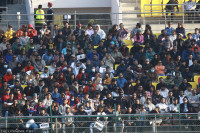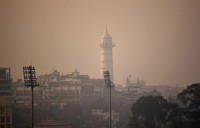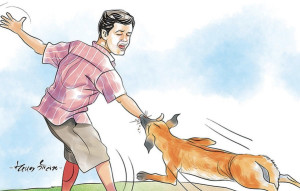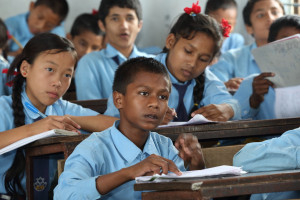Columns
Rethinking coverage of women leaders
Research indicates that women politicians are consistently subjected to biased coverage.
Umesh Pokharel
It is no secret that women’s participation in Nepal’s political sphere—from party structures to local, provincial and federal governments—is increasing. Yet the media continues to focus more on women’s appearance, personal lives and emotions than on their substantive contributions. This not only undermines their political roles but also portrays women politicians as less serious political actors, even though some progress has been evident in recent times.
Stereotypical and gendered framing
Despite journalism’s claims of objectivity, research indicates that women politicians are consistently subjected to biased coverage. News media emphasise their appearance, family or marital status more than their political actions or ideas. For instance, Komal Oli has long been active in party politics, yet her celebrity status overshadows her political identity. The media tend to emphasise her background as a singer, calling her “Gayika Oli” even in serious political reporting. Stories like Poila Jana Pam continue to dominate the headlines, reducing her public image to personal controversies. Similarly, her legal battle with leader Raghuji Pant, who made sexually derogatory remarks about her, was reported as an isolated controversy rather than discussed within the broader context of misogyny in politics.
Another political leader, Hisila Yami, is disproportionately defined by her relationship to her husband, Baburam Bhattarai. Headlines frame her as “Baburam’s wife” rather than as a revolutionary leader in her own right. Even her memoir was covered in the context of her interpersonal relationships, rather than her political journey as a feminist leader.
Sensationalism and tokenism
Women political figures in Nepal often face sensationalist and moralistic media portrayals that highlight their assertiveness or ambition as controversial. Nepali Congress leader Sujata Koirala’s political rise, for instance, was framed by the media as opportunistic, stressing her proximity to power rather than her diplomatic achievements. Similarly, Maoist Centre leader Pampha Bhusal was portrayed as defiant simply for being assertive.
Media coverage of women leaders also spikes during symbolic events like International Women’s Day or elections, but this visibility is inconsistent and rarely substantive. Former President Bidya Devi Bhandari was widely celebrated upon becoming Nepal’s first female president, but the media largely withdrew attention later, except during controversies like her rejection of the citizenship bill. Similarly, Renu Dahal, mayor of Bharatpur Metropolitan City, received early attention for being Pushpa Kamal Dahal’s daughter. Her actual governance efforts and works were less highlighted until much later.
Separately, in many cases, women political leaders are also defined by familial or ethnic labels—such as “Janajati leader” or “daughter of XYZ”.
Discourse and decision-making
The contributions of women leaders at both legislative and local levels often go unnoticed unless linked to controversy. For instance, female MPs such as Bidya Bhattarai, Toshima Karki and Ishwari Neupane have significantly intervened in parliamentary debates. Yet, their efforts receive limited media attention—overshadowed by coverage focusing on less substantive or sensational aspects.
Bhattarai garnered greater media attention only after resigning as Minister of Education, Science and Technology. Media narratives centred on her supposed rift with Prime Minister KP Sharma Oli. She was often presented in sympathetic tones rather than analytical critiques in the media coverage. At the local level, deputy mayors and women ward chairpersons are seldom acknowledged unless caught in disputes. Media panels and political talk shows also reflect deep gender imbalances.
Language bias and selective visibility
Women politicians are often labelled with diminutive or gendered titles such as “lady ministers” or “female cadres,” while their male counterparts are identified by their official positions. For example, Jayapuri Gharti, despite playing a critical role in the constitution-drafting process, was largely portrayed as a “Janajati woman leader,” with minimal focus on her political insights.
Similarly, former deputy speaker Shivamaya Tumbahamphe’s political journey has often been attributed to the endorsement of male leaders, with criticism directed at her for accepting positions perceived as less prestigious. This reflects a narrative where male politicians are cast as power-givers and women as passive recipients.
Additionally, women leaders are frequently criticised for minor flaws, such as mispronunciations or a lack of fluency in the Nepali language. This sort of criticism is rarely applied to men.
International context
A research entitled “Gendering in the electoral run: A media monitoring study of women politicians’ representation in Belgian” by D’Heer, De Vuyst, and Van Leuven, which covered the 2019 Belgian elections, found that despite female candidates making up half of all contenders, they received less than one-fourth of the total media coverage in newspapers, websites, TV and radio during the critical two weeks before the election. When women were featured, the focus often shifted to their gender, personal lives, family and appearance, undermining their credibility and chances of winning.
Moreover, another study, “Gendered Portrayals of Female Politicians in American Online Media”, by Flaka Jonuzi, conducted at the University of Sheffield, England, analysed 30 articles published between 2019 and 2020 in The New York Times, The Washington Post and The Guardian (US), focusing on prominent female politicians Hillary Clinton, Nancy Pelosi and Alexandria Ocasio-Cortez. The research revealed that the women politicians were often portrayed through a biased lens, emphasising personal aspects such as appearance, emotions, family roles and relationships rather than their professional achievements. These powerful female politicians were frequently depicted by the media as emotionally fragile, reliant on male partners or primarily defined by motherhood and spousal roles.
The study also highlighted the use of gendered language and domestic metaphors that reinforced traditional gender norms, alongside negative personality traits that questioned their competence compared to their male counterparts.
Positive shifts and way forward
Despite persistent gender bias in political coverage, gradual yet meaningful shifts are emerging in Nepal’s media landscape. A limited number of media outlets and platforms have become more sensitised to gender issues and have begun producing more thoughtful portrayals of women politicians.
Community-based media, including rural community radios, have also taken encouraging steps by providing space for deputy mayors and ward chairpersons to share their initiatives and challenges. Efforts by select media development organisations and journalist associations to provide gender sensitivity training have contributed to this progress, though such initiatives remain limited in scale and reach.
Additionally, the reinforcement of ethical standards—such as the Press Council Nepal’s Code of Conduct discouraging stereotypical representation—has helped foster more balanced reporting. To advance this momentum, media institutions must prioritise inclusive reporting, move away from sensationalism, ensure gender-balanced representation in expert panels and establish stronger internal accountability mechanisms to promote equitable political representation.




 10.12°C Kathmandu
10.12°C Kathmandu













%20(1).jpg&w=300&height=200)

